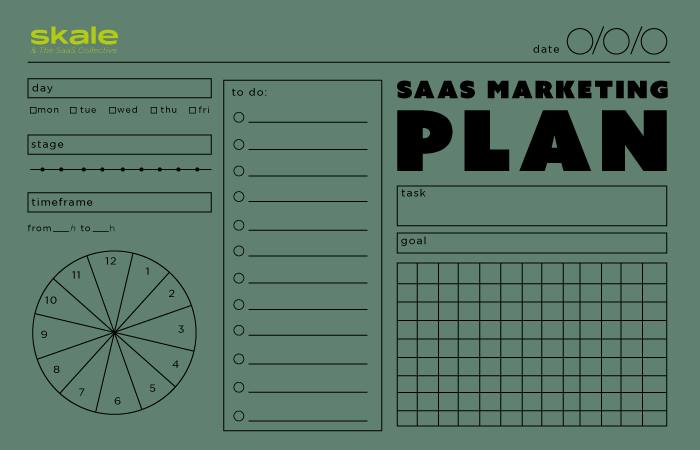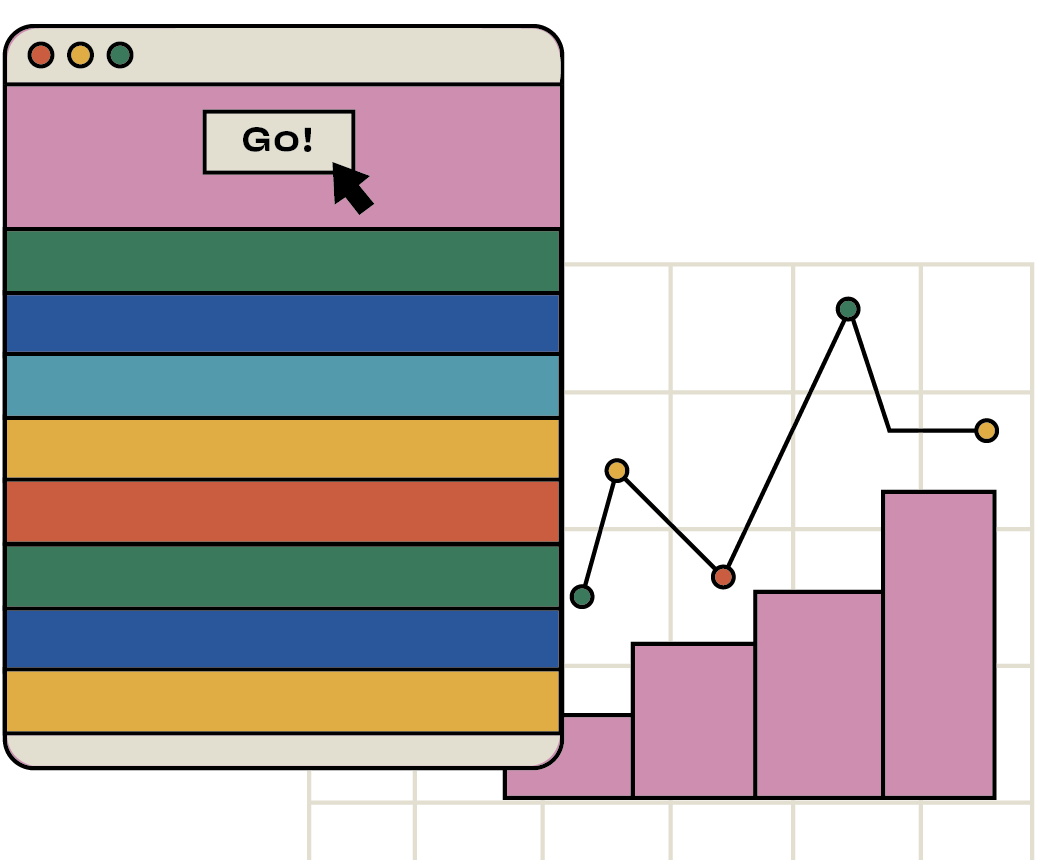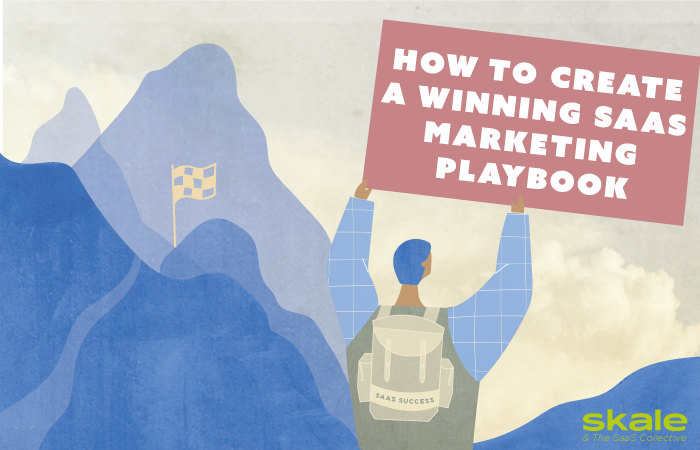
The best 8 SaaS marketing events to attend in 2024
In this comprehensive guide, we'll showcase some of the best SaaS marketing events in 2024 that you shouldn't miss.


Want an agency to take care of your SEO?
Creating a SaaS SEO plan can be overwhelming – let us take care of it for you
Schedule a callSaaS marketing efforts are unlike any other type of business. SaaS company marketers need to focus on different goals, go-to-market strategies and compete in a highly saturated market. That’s not to say there’s no space for new SaaS businesses; it just means their marketing needs to be near perfect if they want to see success.
SaaS companies notoriously focus on customer retention. Sales teams want their SaaS product in the consumer’s hands (or on their screens in most cases) for as long as possible. When the probability of selling to an existing customer is between 60-70%, and a new customer between 5-20%, can you blame them?
This article will explore everything there is to know about a SaaS marketing plan. Whether you’re focusing on inbound marketing, a content marketing strategy, email marketing,
social media marketing, or various other SaaS marketing strategies, you should be able to walk away from this article with a clear vision of where to take your SaaS company and its efforts.
SaaS marketing plans need to consider long-term customers. We’re not aiming for quick wins here and one-time sales. We’re looking for customers that are in it for the long run. Plus, marketing to these customers takes time—six months to 3x as much is not uncommon to close an enterprise SaaS deal.
With this knowledge in hand, we need to create marketing plans built for demand and adaptable depending on marketing fit, demand, and more. This might sound like a lot of investment, but consider the benefits for your SaaS brand:
So, let’s get into building a SaaS marketing plan that’s as flexible as an Olympic gymnast.

There are a few things you need to know so you can build the best plan possible. These factors will help structure your marketing plan to be as accurate and durable as possible.
First thing’s first. What are your marketing goals? What goals and targets are your teams responsible for? Perhaps your goals are assigned to you from leadership, or perhaps you’re responsible for setting your own.
If it’s the second of these two options, identify other team goals and see where you can support them.
For example, if Sales have a target of closing 100 leads per month and you have a lead conversion rate of 5%, one of your marketing goals may be to provide 2,000 MQLs to sales per month. Remember to take into account how long the sales cycle takes. If it’s three months then you’ll need to acquire the MQLs three months in advance, for example.
Work backward from end goals until you get to what your marketing team can do and the numbers they need to hit to help those end goals.
However, the above is just monthly goals— short-term. At this point, you’ll also want to identify any long-term goals of your SaaS business. Things like:
Once you’ve got your goals laid out, it’s time to move on to the next step of planning.
It’s always tough to assign a marketing budget and certainly to request a bigger budget.
Consider the ROI of each marketing initiative in comparison to the input for it to be a success. This can be a little tricky, especially if you haven’t used a particular marketing channel before.
Still, there’s a lot of research and case studies out there for most marketing strategies, so dive into the numbers and do some ballpark math. Typically you want to focus on ensuring your CAC payback is 12 months or less.
This is a huge part of your research to creating a stellar marketing plan. It’s also something to do thoroughly if you want your digital marketing strategy to pay off.
Using a combination of quantitative and qualitative consumer research techniques, figure out who your users are, why they came to you in the first place, and why they’re still using your product today. It’s also important to align on what their pain points were and still are.
You can find this data out in numerous ways, 1-1 interviews, in-app micro surveys, email questionnaires, customer success teams, and more.
Once you’ve understood the above, you can start to flesh out your buyer personas. There’s a ton to know about building buyer personas, so we won’t go into it too much here. However, spend time on this, go in-depth into who these people are, and present them visually to the rest of the team.
Read more on buyer personas in our SaaS marketing playbook.

By identifying your current users and building accurate buyer personas, you’ll have an idea of the channels your potential customers are using. In your plan, you can start to hypothesize how to use those channels best.
These channels can be anything from slack groups to Linkedin, email to popular blogs, and podcasts. Consider those channels outside the norm; if there’s a strong community of like-minded people there, you’re on to a winner.
A good way to start is to send out an attribution survey to your current user base, asking them from where they heard about your business.
Your user research and interviews with existing customers should start to suggest which channels will work best for your marketing efforts.
However, if you still struggle, look to your competition and do some micro-tests of your own. In those channels where you get more instant results, like social advertising or PPC, running small tests can be a better idea than going all-in with your budget.
Okay then! We’ve done our research and are now ready to create a marketing plan that will help us achieve those marketing goals. Let’s dive straight in.
First up, like with any project, you need to hold yourself accountable for your efforts. Only in this case, it expands to your entire marketing team. It’s great that you have your marketing goals in place, but when do you plan to assess them and, more importantly, hit them?
This is where your KPIs come in to lead the charge. Before you start setting goal deadlines, start setting KPIs that will showcase if you’re on track to hit your goals. If you’re not, it’s time to adapt your saas strategy to get back on those tracks to success.
If you are, perhaps you can much those goals a little more? It’s up to you.
A marketing plan has many moving parts. What are they? What resources do you need to put your plan into action and make it a success. A few things to consider are:
What people do you need on your team if you don’t have them already, and what team members will you need on hand?
Don’t just include your team members and creators, though; also include decision-makers. Who will be giving sign-off and the green light for ideas and projects? When will you need their time?
What’s more, what people or knowledge don’t you have on your side that you’re going to need help with? This is often the case for experts in a certain area or specialists in content creation like writers, designers, videographers, and more. Start sourcing and briefing those contractors now.
Book all of these people in at the beginning of your plan, so you don’t run into any bottlenecks further down the line.
The chances are you’ve done most of your budget work previously. That’s good; you’ve won a lump sum for you to make these goals happen. However, now’s the time to getting into the nitty-gritty of assigning your budget.
How much are you spending on each platform?
Within that platform, how much are you dedicating to each method?
Do this in rounds. Don’t plan all of your budget at once. You need to leave your methods room for flexibility, so if you see it’s working wonders in one place, you have some left in the bank to give your efforts an added push rather than having to borrow from somewhere else before it’s had a chance to truly shine.
Bonus tip: usually SaaS marketing teams allocate 30% of their budget on brand marketing initiatives and 70% on growth marketing initiatives.
Lastly, what SaaS tools do you need to help you get this customer acquisition show on the road? Whether you already have them and need to set them up so they’re ready for what’s about to follow, or you need to source and onboard them, now’s the time to do it all!
Communication is critical to a marketing plan that guides your team to success and one your team use and rely on.
Create a framework for how you’ll initiative your plan, that’s step-by-step. If you’re a small team, you can get as detailed as listing who is responsible for what. If you’re a larger team, then you can pin it on other teams and leave them to distribute the workload accordingly.
Once you’ve got your framework in place, communicate it wisely. This means no email chains or Slack messages!
Your marketing plan needs a communications strategy that’s accessible to everyone—this includes any external stakeholders. Consider a project management tool or even a documentation tool like Slite to help build this framework.
Successful SaaS companies experiment, so it’s important to clarify that a plan can always change, and new things can be explored along the way.
Once you’ve got your marketing plan, it doesn’t mean it’s set in stone. It’s there to guide and provide clarity on why you’re doing certain actions. However, it needs to remain flexible.
Test, monitor, and re-prioritize your marketing plan using your goals and KPIs to align on how you’re doing and where your efforts need to shift. There are plenty of SaaS tools out there to enable you to track your marketing efforts; some of them you can find in our SaaS Marketing Tools article.

Improve your strategy based on real data
Track SaaS SEO ROI and improve your strategy based on real data
Get your free ROI TrackerWe won’t make you wait any longer- here are seven expert opinions on how to create a scalable SaaS marketing plan.
“I would say, first of all, identify what resources you have and what you can do. Second of all, identify the important topics in your space. Third, create landing pages, industry pages, competitor pages. A lot of these are important touchpoints for customers.
Next, create some generic content, evergreen content, almost like a library of content to support planning some content marketing campaigns throughout the year—thought leadership statistics report pieces are great here.
I think nowadays video has also become much more important for marketing tactics, a good webinar strategy, those kinds of things. I would also make sure to have YouTube in my marketing mix.
It’s very unique to the market. It’s very dependent on how many resources you have, and how competitive your topics are.”
Kevin Indig, Director of SEO at Shopify
“You can create a SaaS marketing plan in seven steps.
1) Describe and size the ideal customer profile (ICP). Ask yourself, for who is my product the best fit? What pain points hurt them the most?
2) Identify where these people are. Where do they consume content? Do they attend meetups? What do they read? What do they watch?
Do this using SaaS keyword research; hold interviews with your ICP—or surveys—and get as much information about them as possible. Do it as long as you feel you have enough consistency, and find a consistent pattern.
3) What are the easiest ways to get to these people through the places they hang out? How efficient is a channel? How scalable is it? Go to market.
4) Understand your CAC for each tactic: outbound, Facebook ads, referrals, 3:1 LTV:CAC overall, and Cost per sales opp / PQL to name a few. Use this to monitor your tactics.
5) Define OKRs: given what we know, time, money, what investors ask us for… let’s set some milestones. For example, we want to get XX customers at this CAC. What are the team OKRs to drive this?
6) What product positioning are you going to put in place?
7) Responsibility assignment matrix: what resources do we need? Who does it? What do we have?—more on the human side of things.”
– Sergi Garcia, Chief Marketing Officer at Red Points
“One key step not to be missed is postmortems—analyzing previous plans and campaigns that didn’t perform as well as expected. Understand deeply what key assumptions were validated or invalidated, and what can we do with that information.
Often, if a campaign didn’t perform well, it’s not because a certain channel simply doesn’t work or has become too expensive (sounds familiar?), but could be a variety of factors that contributed to it: lading page, messaging, creative, targeting, local events, tracking issues…
Rather than giving up and calling it a day, I recommend teams dive deep to understand the reason and tweak ‘failed’ campaigns.
Those ‘failures’ are invaluable information for iterating new experiments.”
Holly Chen Marketing Advisor @ Loom
Let’s assume we are talking about a very early-stage SaaS startup. It is key to make sure you define and include early on the product development indicators of all the metrics you want to monitor to determine that dictate if you are getting to the stage of product-market fit (meaning that users convert AND keep using the product after a while)
Then if users are ready to pay and why.
Don’t look at the data from a global perspective, make sure you segment your users by cohorts to ensure that you go as granular as possible and tie them to your goals (upgrade, upsell, etc,..)
Tools like Intercom, Salesmachine, or Mixpanel all enable you to do this pretty easily.
Your product marketing plan should be at least based 70% from the information you can gather from your users (and not only the free ones).
Plus, gathering qualitative information via 1:1 sessions with clients is also very valuable to capture insights on how your product/service is really perceived by users.
Manuel Jaffrin Tech Entrepreneur & Startup Investor. GetApp Co-founder
“Speaking with your target audience (or existing users if you have them) in 1-1 interviews is a crucial element of creating a winning SaaS marketing plan.
You can learn so much about the directions your product should be going in, points of friction your users are experiencing, find golden “big ideas” for multiple campaigns, and even at a basic level with figuring out the type of language and tone of voice you should be using to write your marketing content.
There’s no shortcut to it, but you should definitely record them and create transcripts (Rev.com for human transcription, or Temi.com for automated transcripts) so you can easily sort through them and find the crucial insights you need.”
Eden Bidani Conversion Copywriter. Marketing + Acquisition Strategist Company NameGreen Light Copy
“My typical process is research-theorize-test-research-iterate. The Jobs To Be Done interview framework is particularly useful for identifying objections and motivations – and I lean on it a LOT. As far as testing, I don’t get that fancy–it’s really just about iterating again and again.”
Nikki Elbaz, Head of Email, COPYHACKERS
“If you’re starting with a smaller set of data to analyze in order to decide which areas to focus on in your strategy, we found that by looking at the data very granularly and regularly helped us to quickly understand what looked promising and what didn’t.
It’s so important to see each user’s journey—seeing it from their first touch to the point they convert and what influenced them in between.
As we build up more data we can see which channels are performing best in terms of opportunity generation (and in combination with each other), the numbers tell us where to invest.
Then we can keep these channels growing and constantly keep looking into ways to optimize them or find new ones!”
Amy Woodward Digital Marketing Manager @ Alaya
If you’re in a unique position to contribute towards a future article of ours, don’t hesitate to reach out! We love hearing from experts within SaaS and would be happy to feature your thoughts. Now, go make that killer SaaS marketing plan!

Get inspired with real successful stories
Treat yourself to inspiring SEO stories from Piktochart, Maze and other successful brands
Take a look hereA SaaS marketing strategy is a type of marketing focussing on selling software as a service. SaaS is usually based on a subscription model, so a SaaS marketing strategy aims to get long-term users onboard rather than convert one-time sales.
SaaS marketing differs from general marketing because of the subscription models and recurring buyers it usually aims for.
At the same time, B2B SaaS marketers often have to convince more than one person to onboard a product. It makes their job that much harder as they’re not selling to one person as they’re often selling to entire teams.
There are 4 basic steps for creating a SaaS marketing plan:
1. Define your goals before you start
2. Understand your buyers & ICP
3. Make a marketing budget & always consider ROI of any campaign
4. Test, monitor, and re-prioritize until you find what works best
Learn more about
SaaS Marketing

The best 8 SaaS marketing events to attend in 2024
In this comprehensive guide, we'll showcase some of the best SaaS marketing events in 2024 that you shouldn't miss.

7 Best SaaS Copywriting Agencies & Services in 2024
11+ SaaS copywriting agencies that will educate your audience, boost revenue, and nurture leads.

9 SaaS Content Marketing Agencies in 2024: Reviews & Pricing
Create content that generates serious revenue when you work with a SaaS marketing agency from this list.